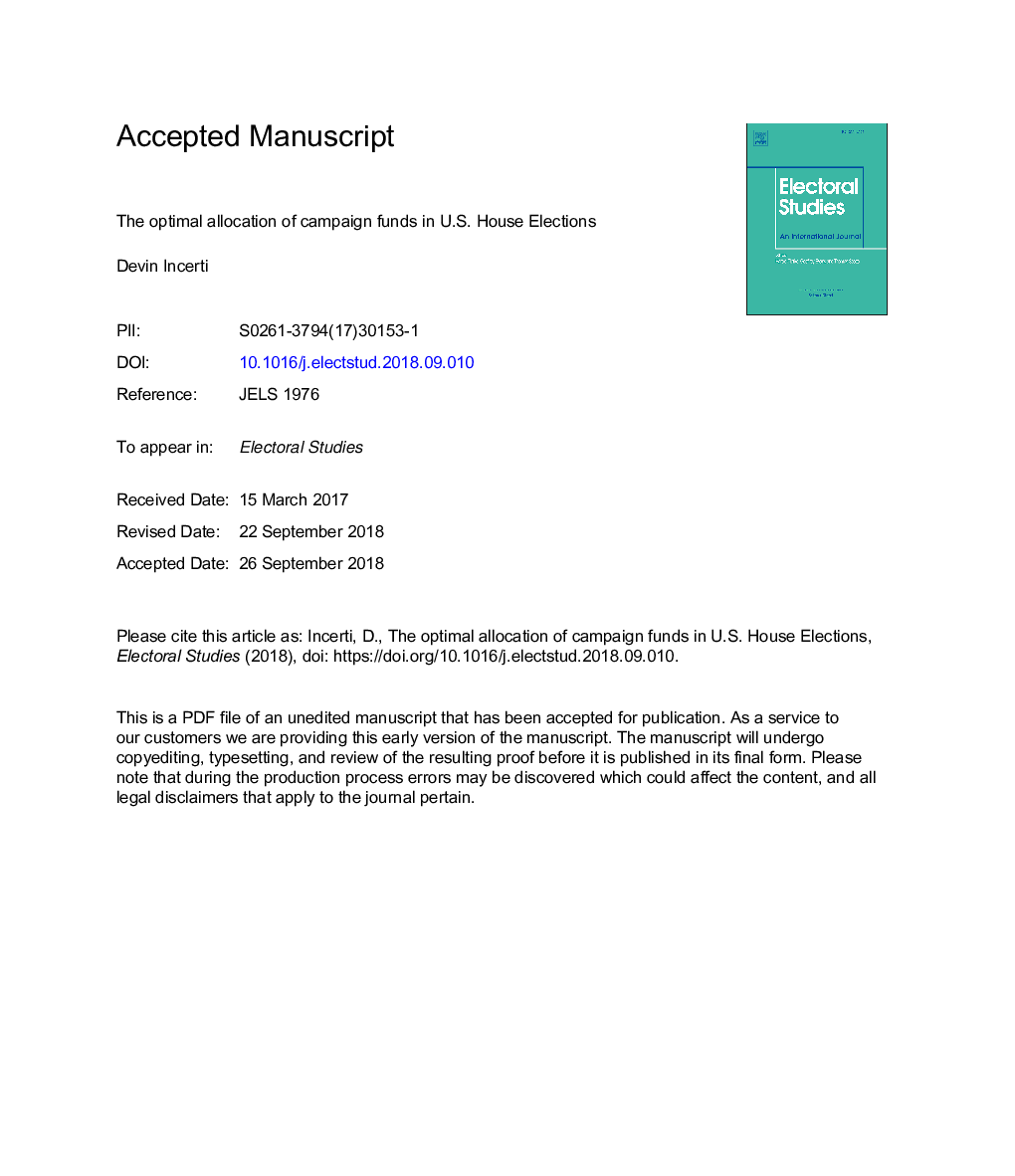| Article ID | Journal | Published Year | Pages | File Type |
|---|---|---|---|---|
| 11027540 | Electoral Studies | 2018 | 42 Pages |
Abstract
How should political parties allocate resources in U.S. House elections? Are actual spending strategies optimal? This paper answers these questions by using Bayesian election forecasts to estimate a probabilistic voting model. The model provides real-time estimates of the marginal value of additional resources in a district during a campaign and can be used to compare actual spending patterns to the amount that should have been spent according to the model. The correlation between observed and optimal spending is over 0.5 in each non-redistricting year from 2000 to 2010 and observed spending patterns respond to new polls during a campaign. The correlations are consistent across different types of campaign donors including the Democratic Congressional Campaign Committee and the National Republican Congressional Committee, various political action committees, and individuals. There is also evidence that spending is based on maximizing total seats rather than the probability of winning a majority of seats.
Related Topics
Social Sciences and Humanities
Social Sciences
Geography, Planning and Development
Authors
Devin Incerti,
